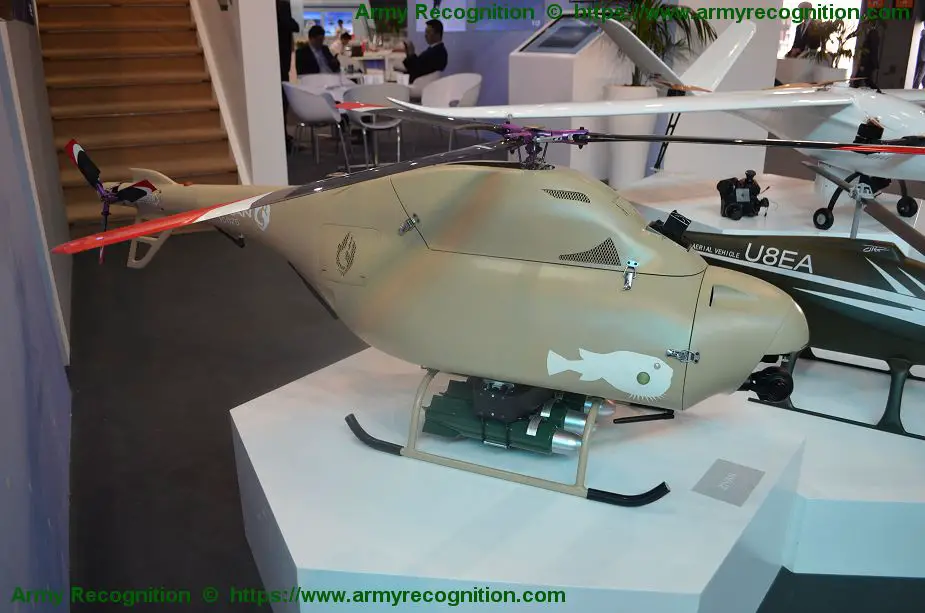Chinese defense industry showcases a wide range of UAVs (Unmanned Aerial Vehicle) at AAD 2018, the International Aerospace and Defense Exhibition including the unmanned helicopter Ziyan Blowfish I which is armed with bombs.

Ziyan Blowfish I unmanned helicopter fitted with bombs under the body at AAD 2018, the Aerospace and Defense Exhibition in South Africa. September 2018. (Picture source Army Recognition)
The Blowfish 1 is a lightweight, vertical take-off and landing (VTOL) unmanned aerial vehicle (UAV) designed and manufactured by the Chinese Company CATIC (China National Aero-Technology Import & Export Corporation).
The Ziyan Blowfish I is a multifunctional and universal unmanned helicopter. It can flight in ultra-low altitude to medium-altitude environment, complex geography and in all-weather conditions.
The Blowfish I is equipped with a new-generation of flight control system especially developed for smart unmanned helicopters. The GCS (Ground Control Station) consists of one PC (Personal Computer) able to control the UAV for intelligent flight, built-in a variety of mission templates to support high-definition digital image transmission.
The Blowfish 1 can be controlled either manually from the ground control station or through autonomous mode. It can take-off or land automatically even in adverse weather conditions using the AFCS and GPS.
The Ziyan Blowfish I has weight from 9.5 to 12 kg and is electrically powered. It has a payload of 12 kg that can include different types of weapons. At AAD 2018, the Blowfish 1 was armed with three small bombs mounted under the body of the helicopter.
The engine enables the Blowfish 1 to fly at a speed from 70 to 90 km/h and a maximum cruising speed of 145 km/h. This unmanned helicopter has flight duration from 45 to 60 min and can withstand maximum wind speed of 17m/s during take-off or landing. It can operate at an altitude of 5,100 m with temperature from -20° to +55°.














